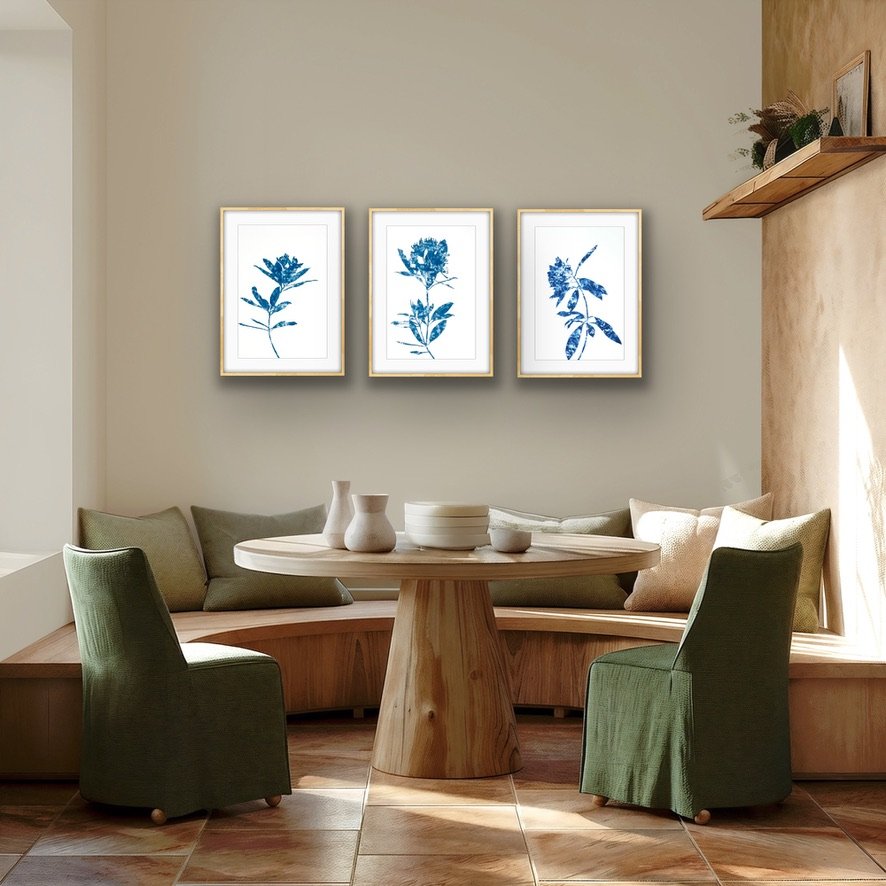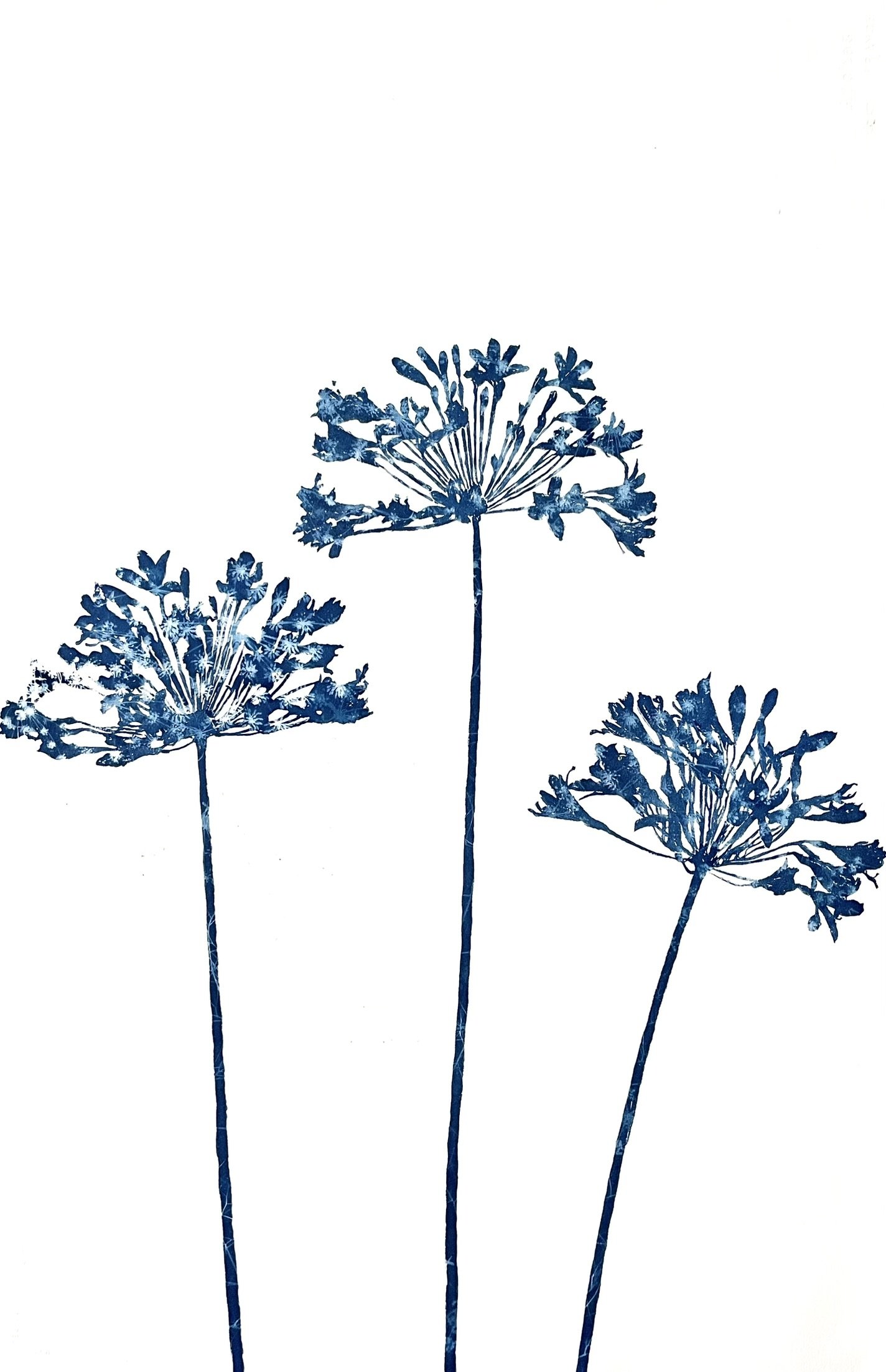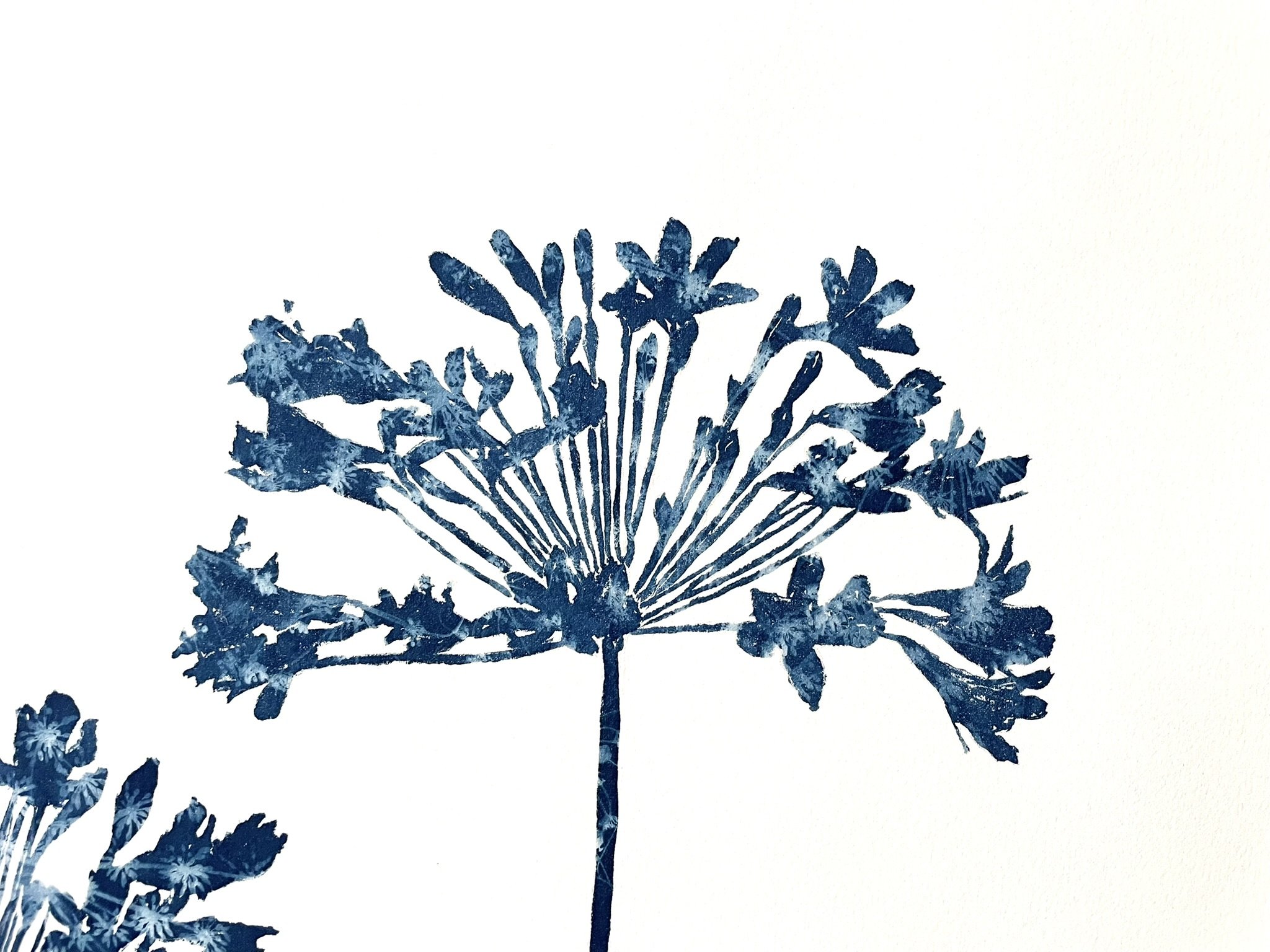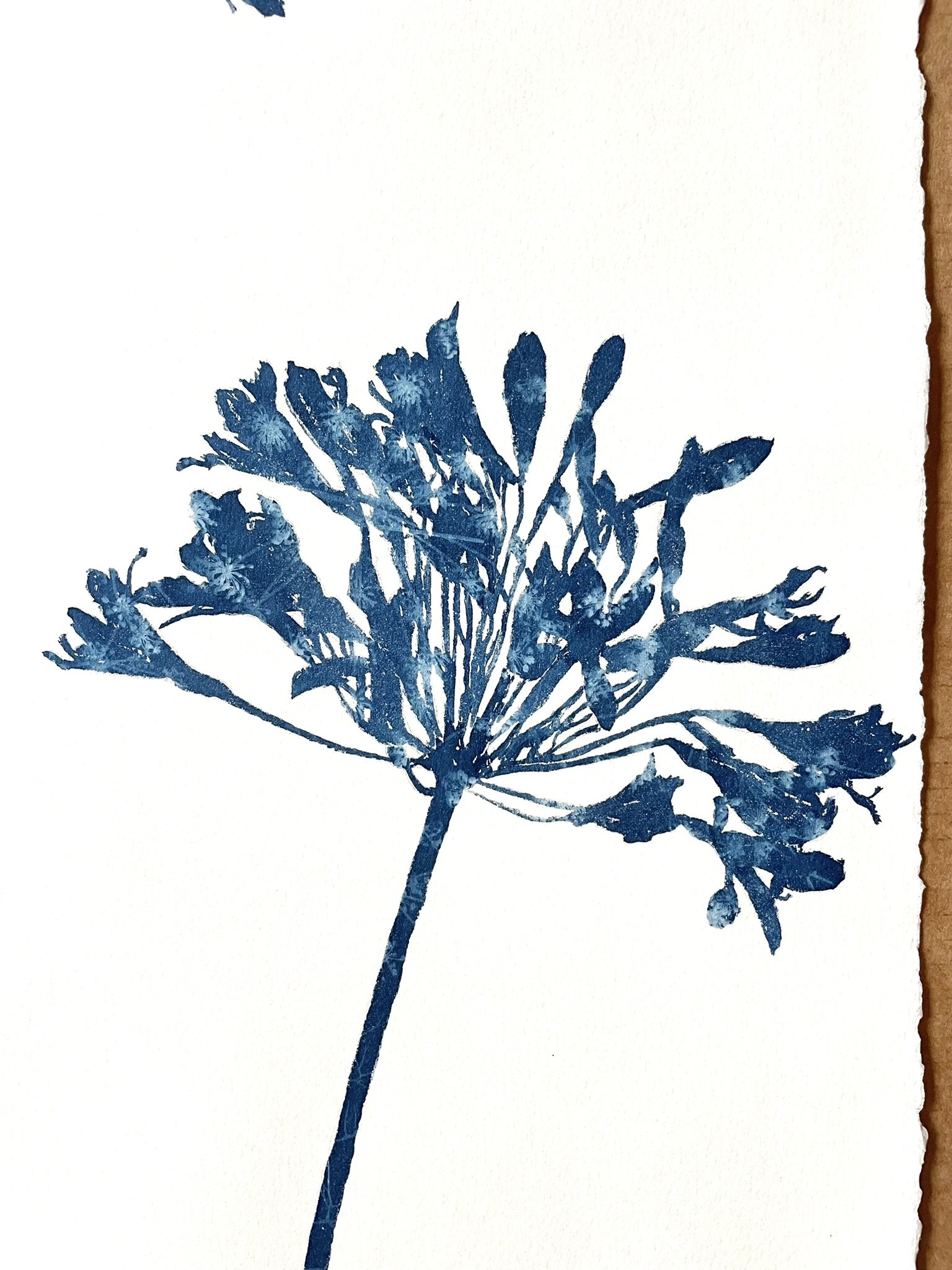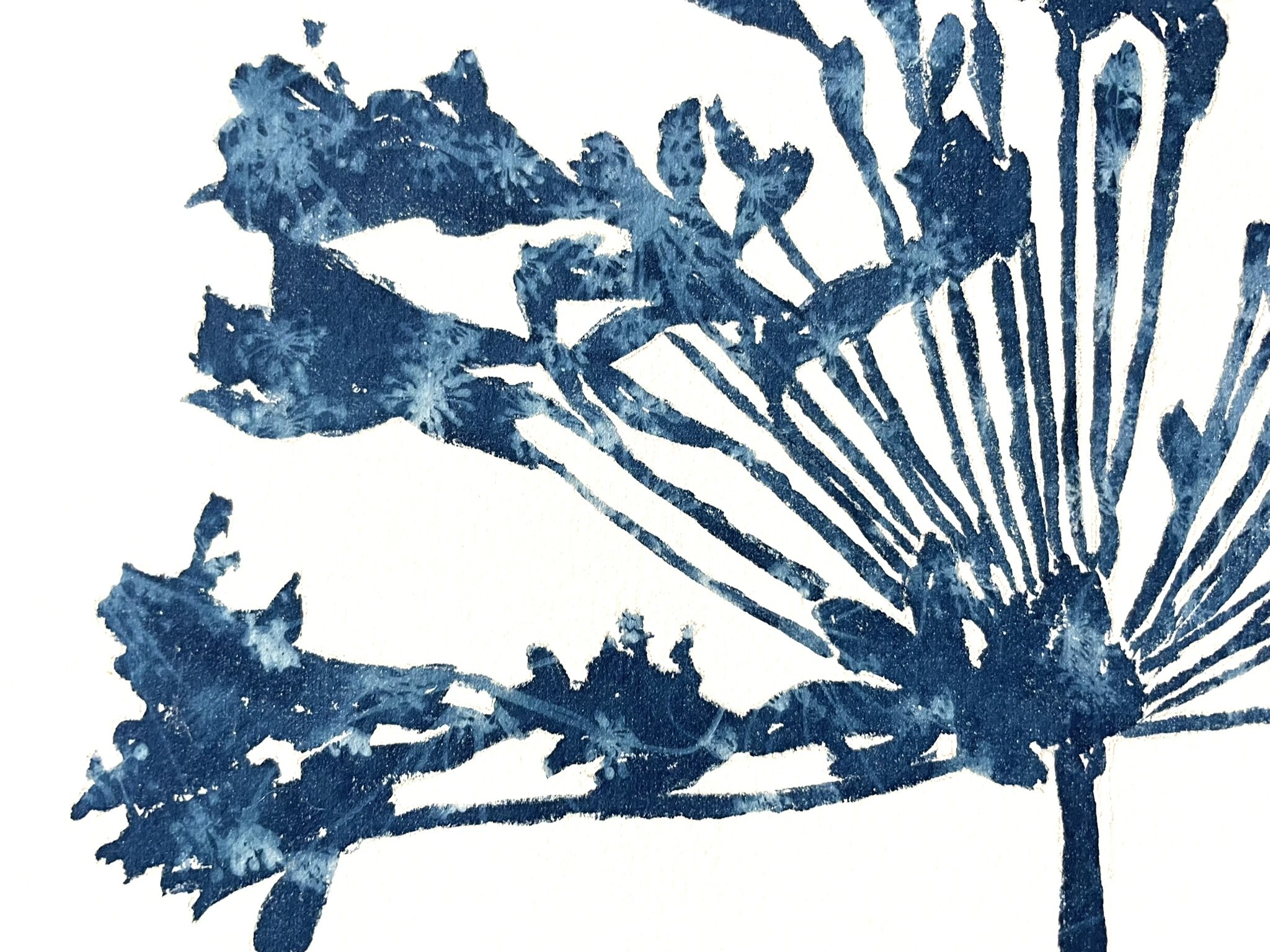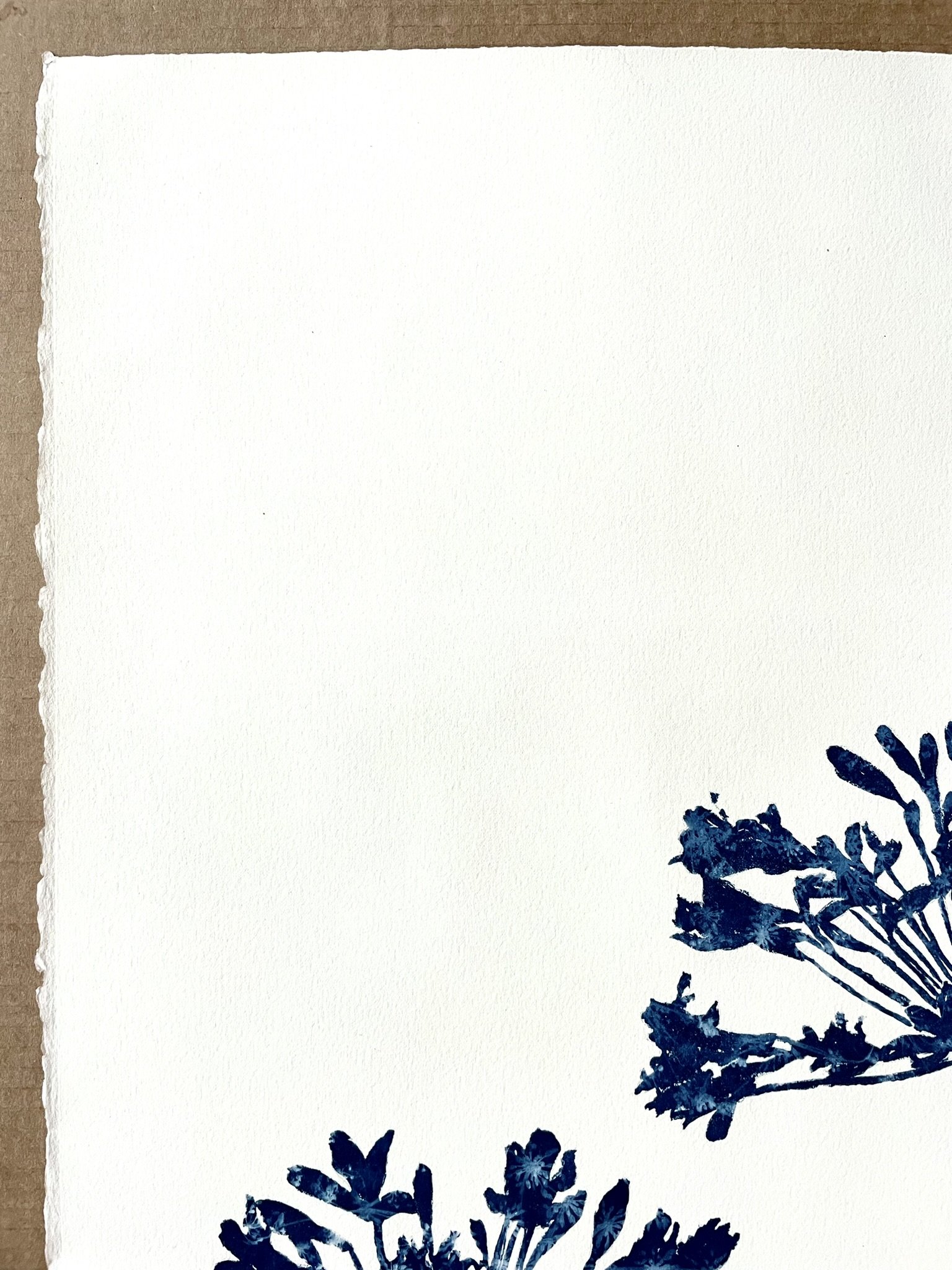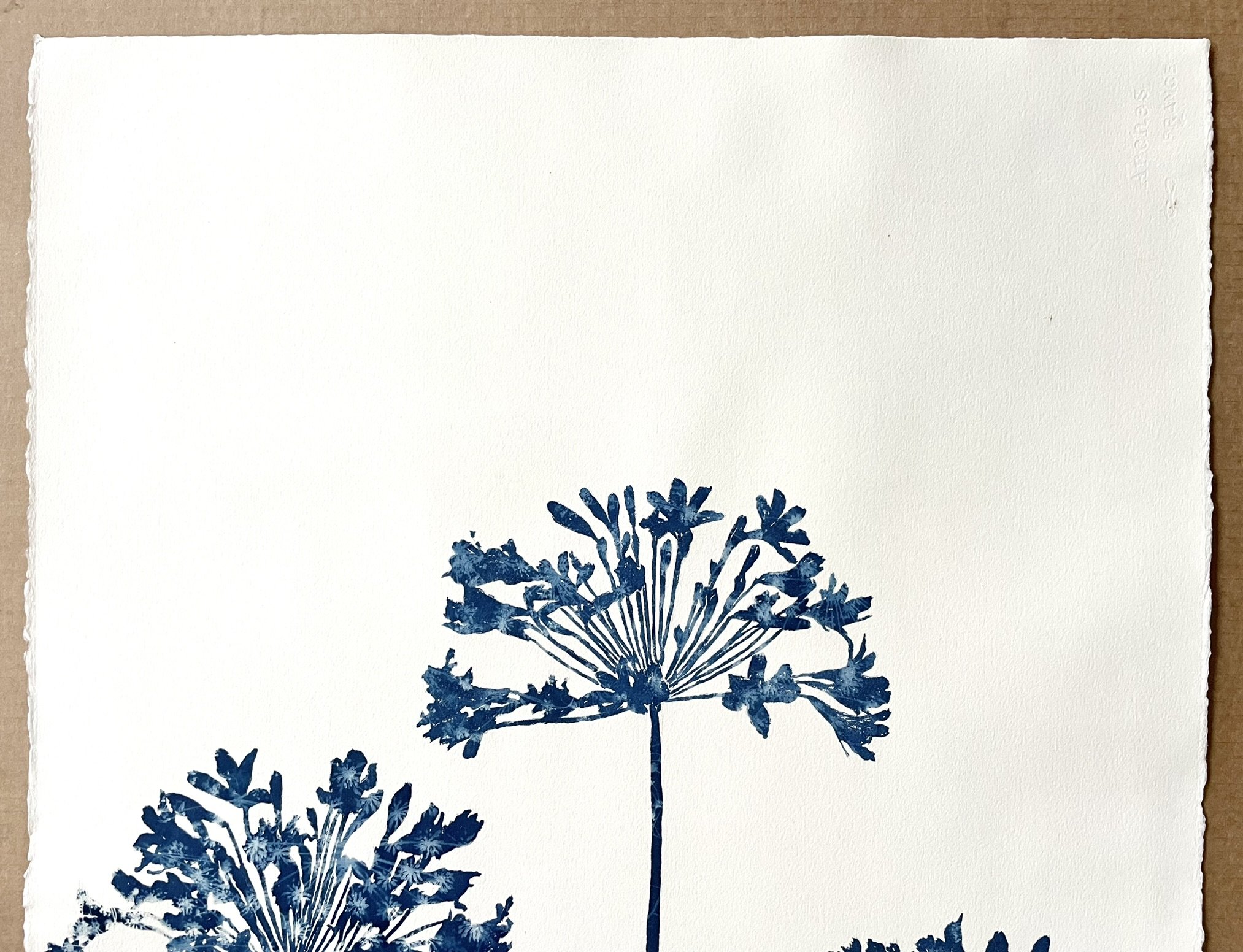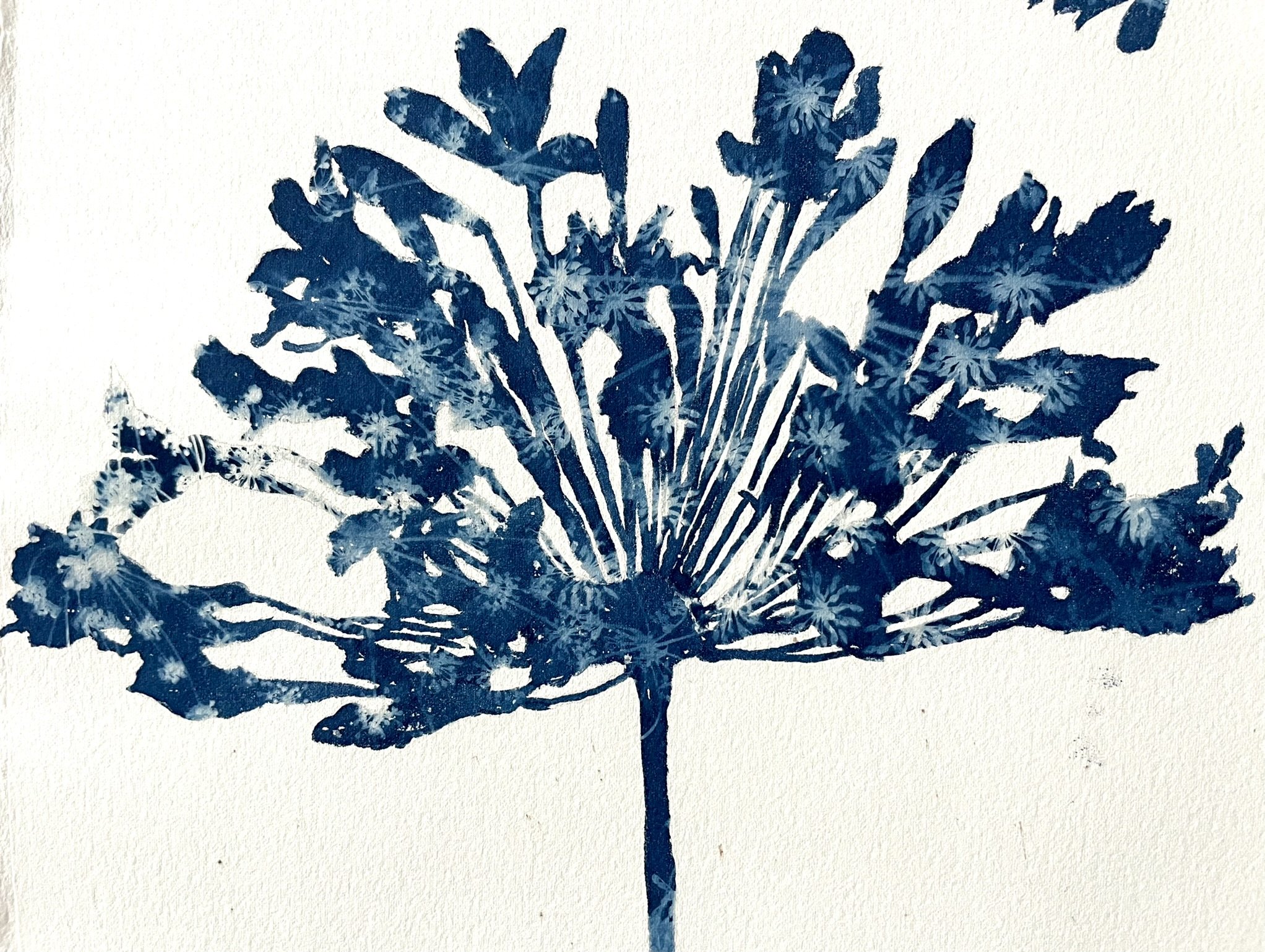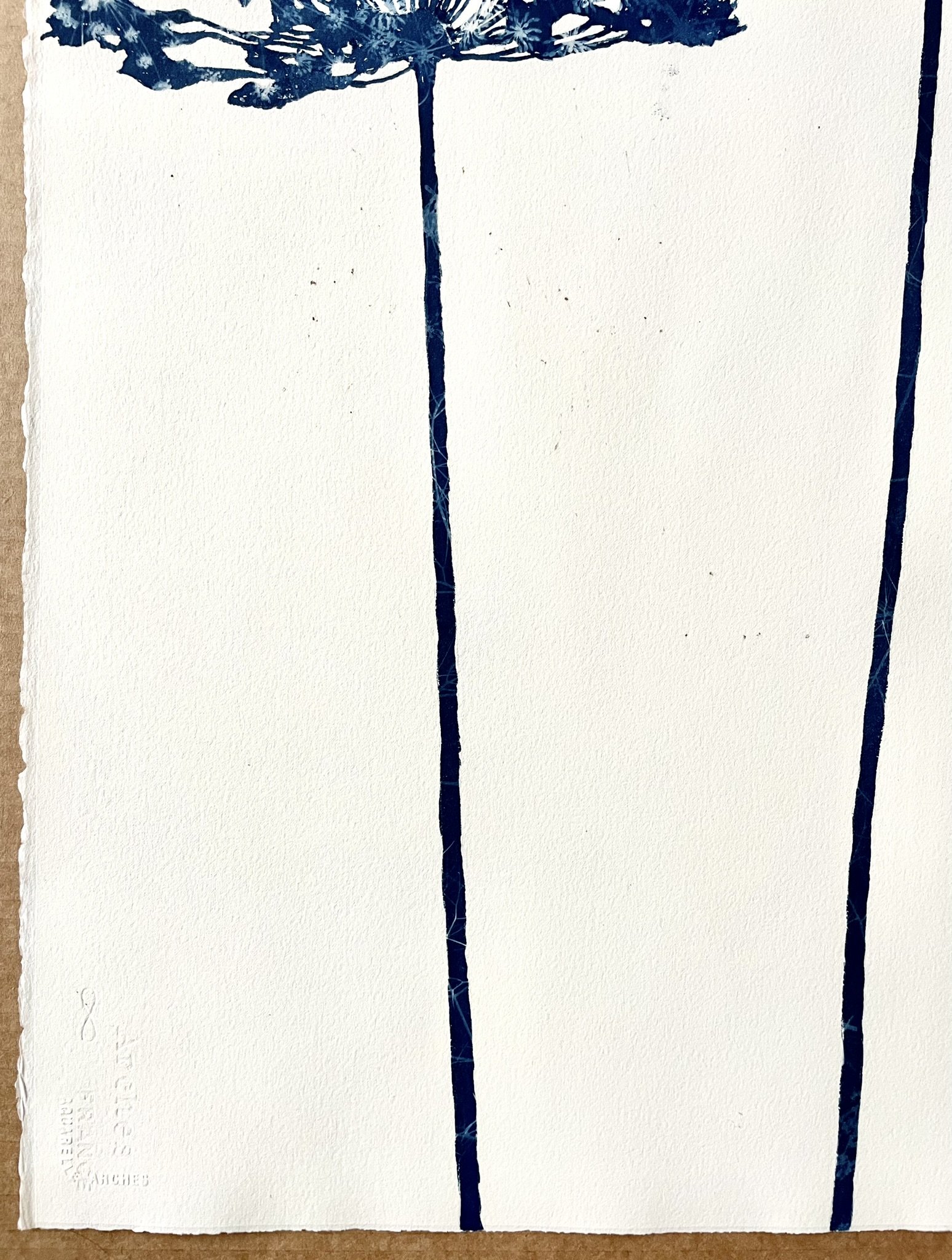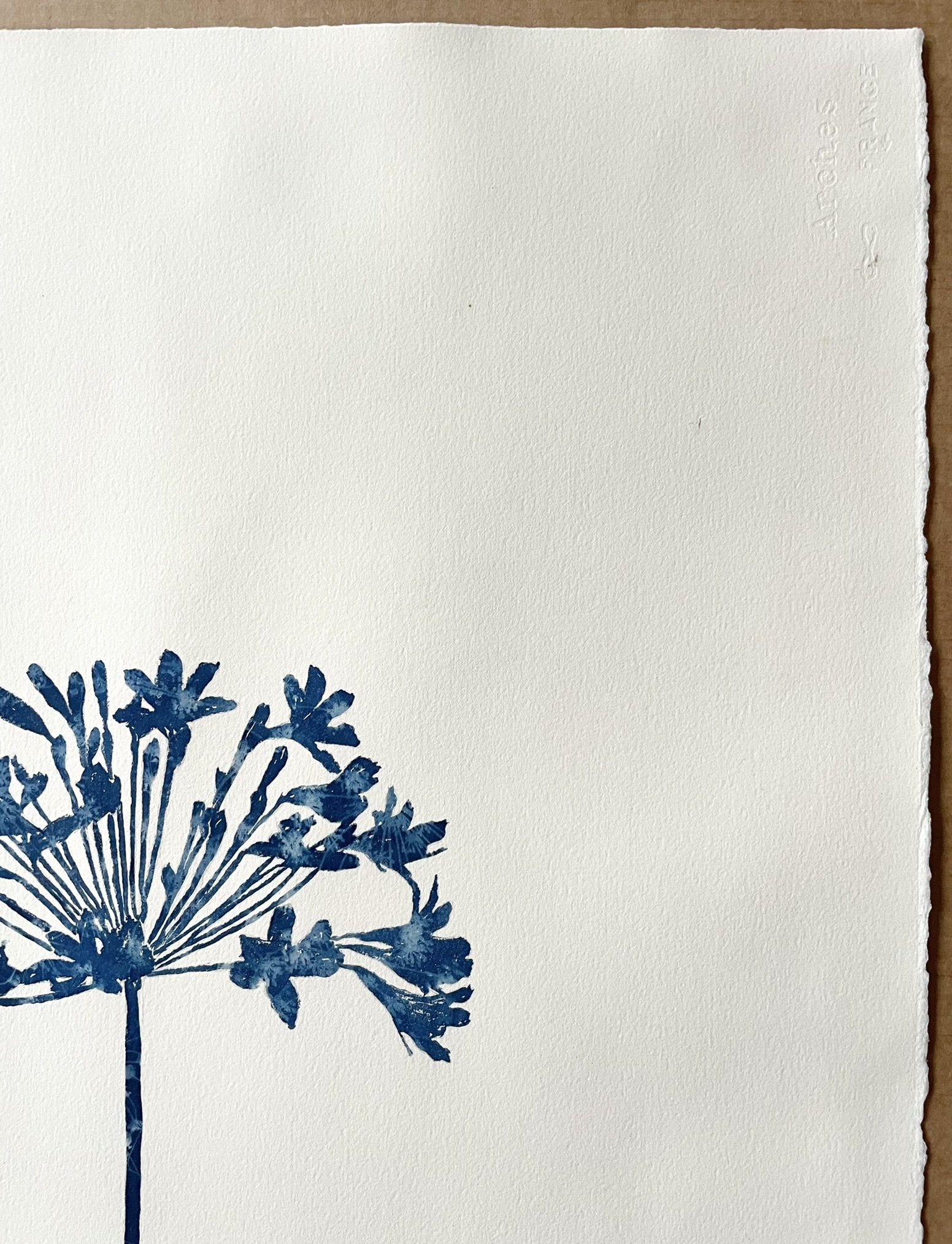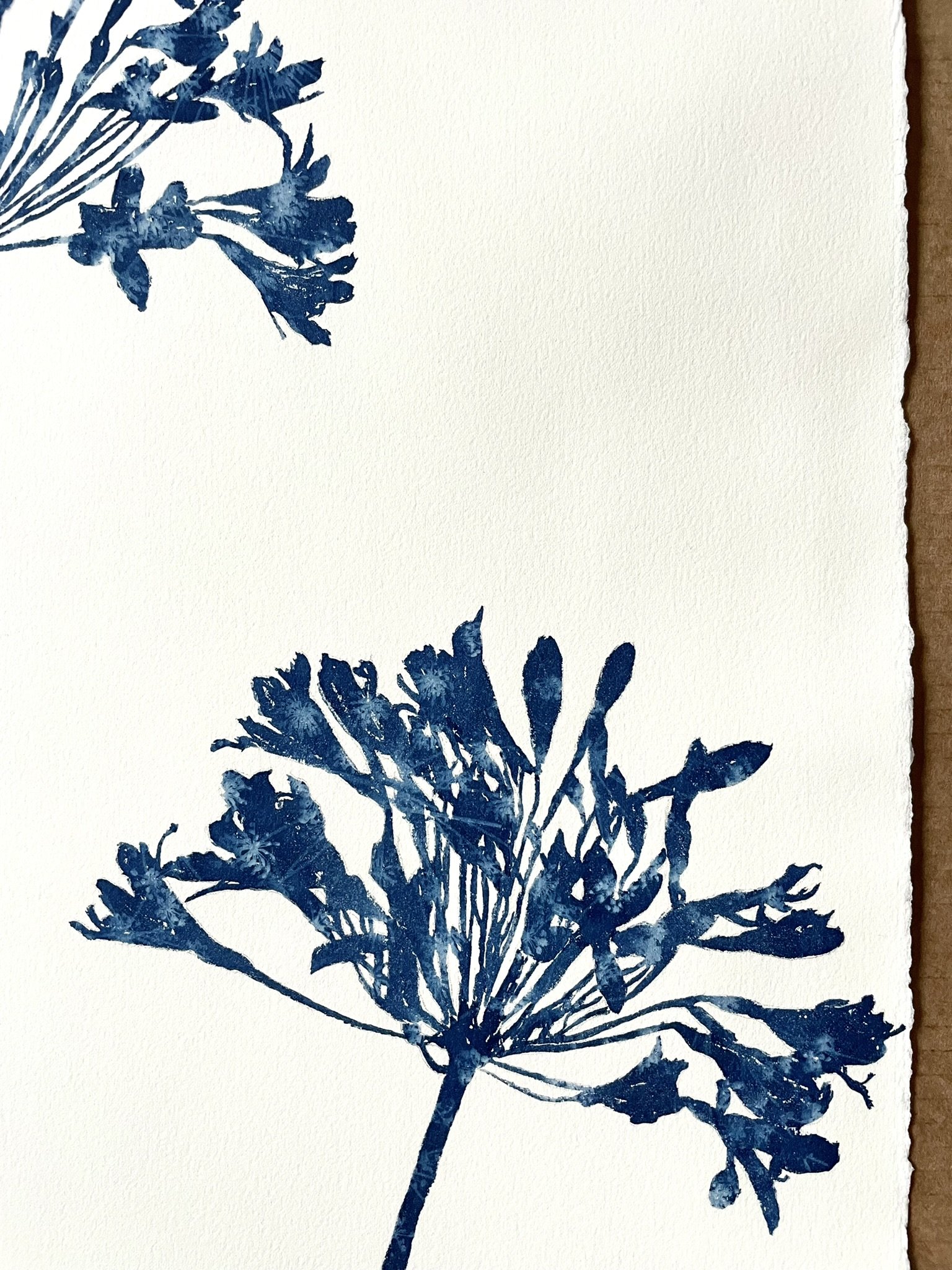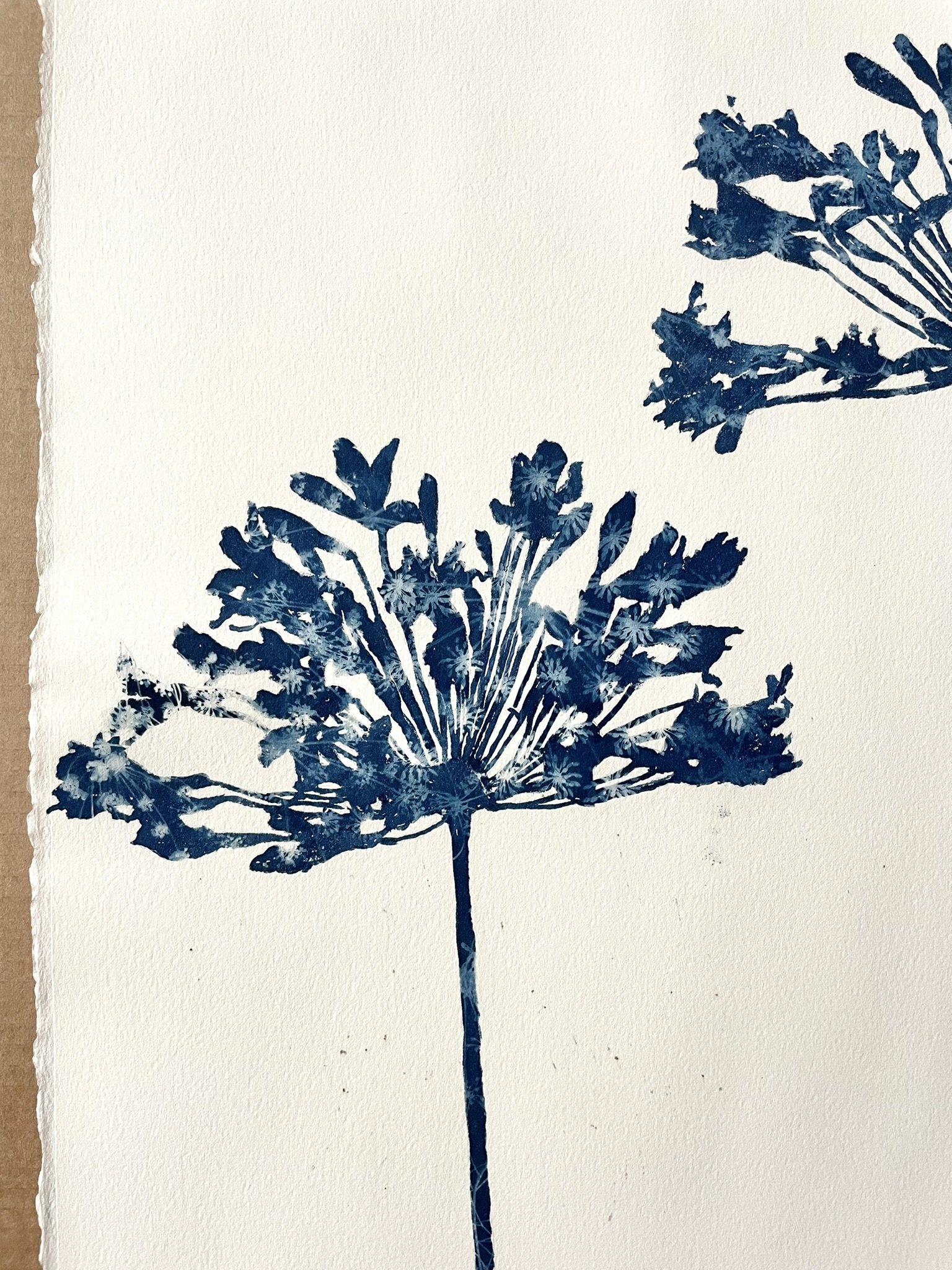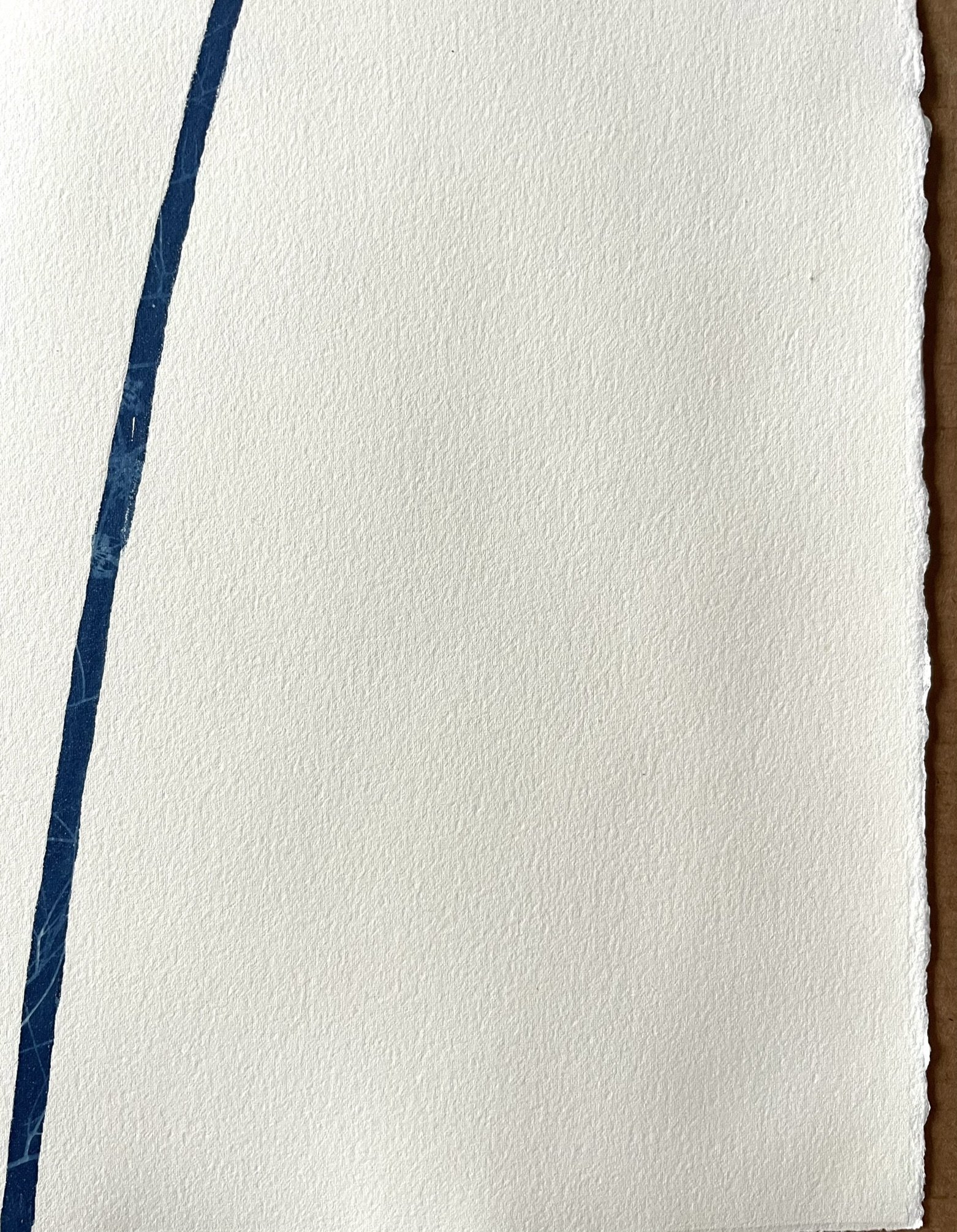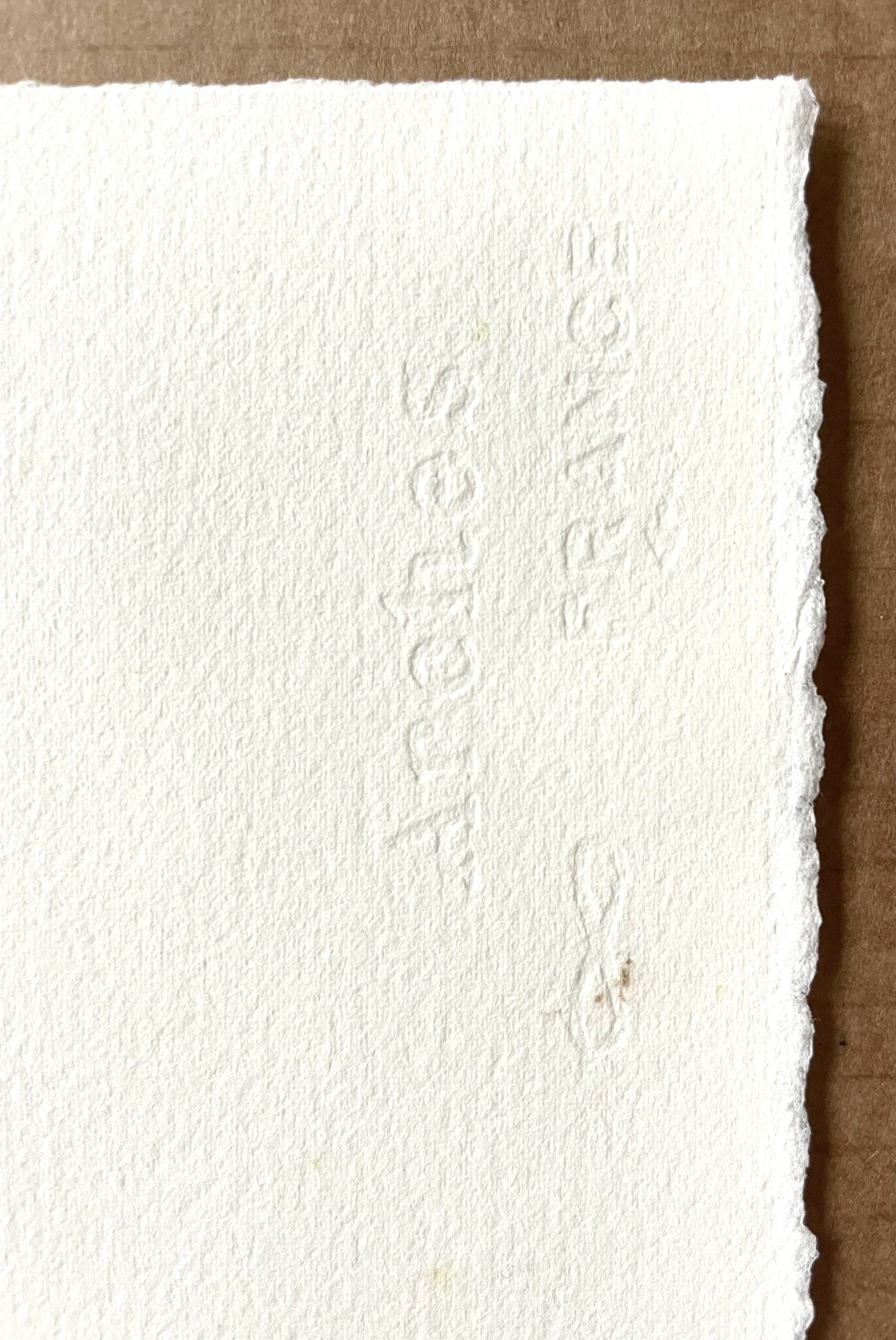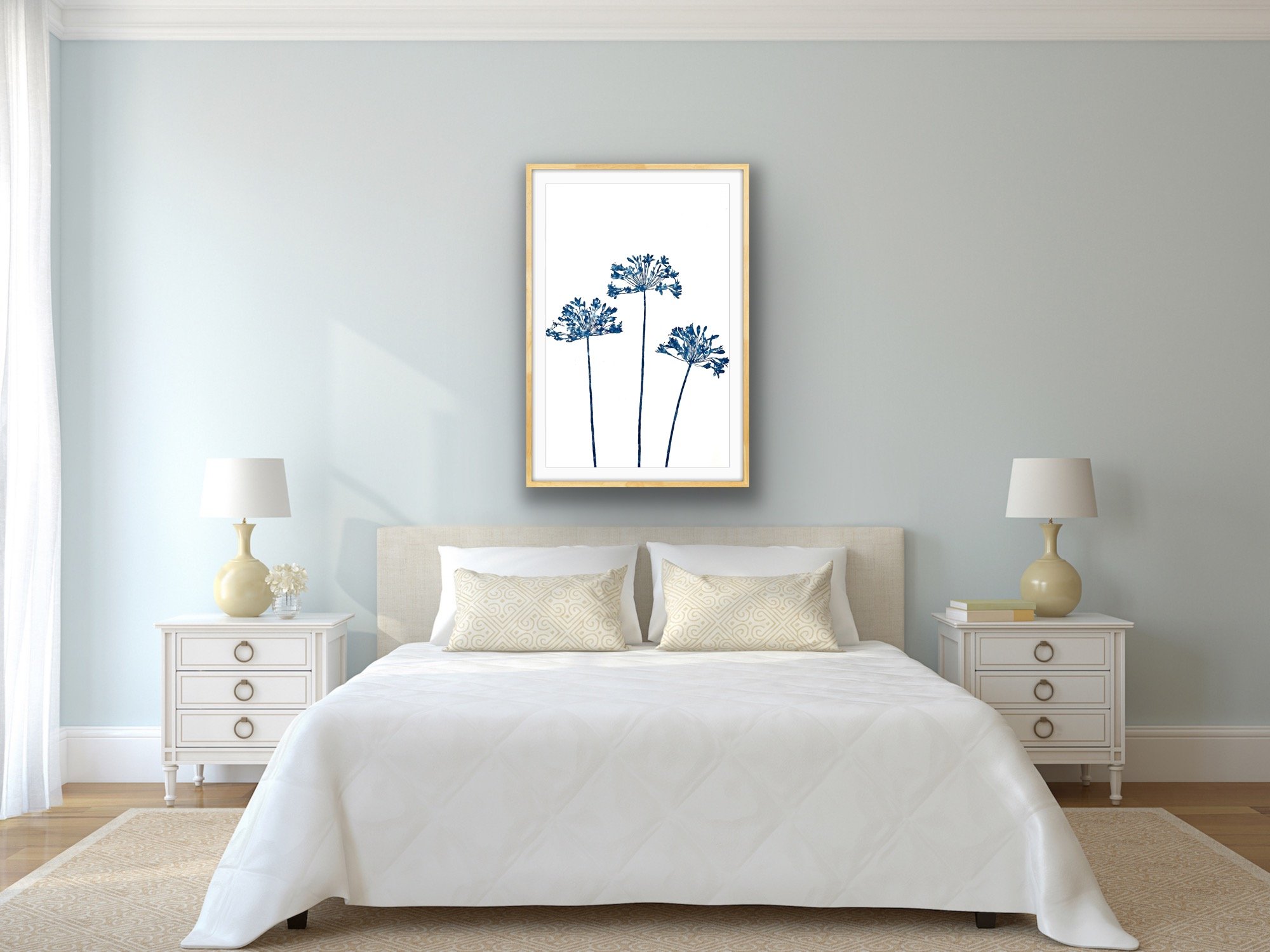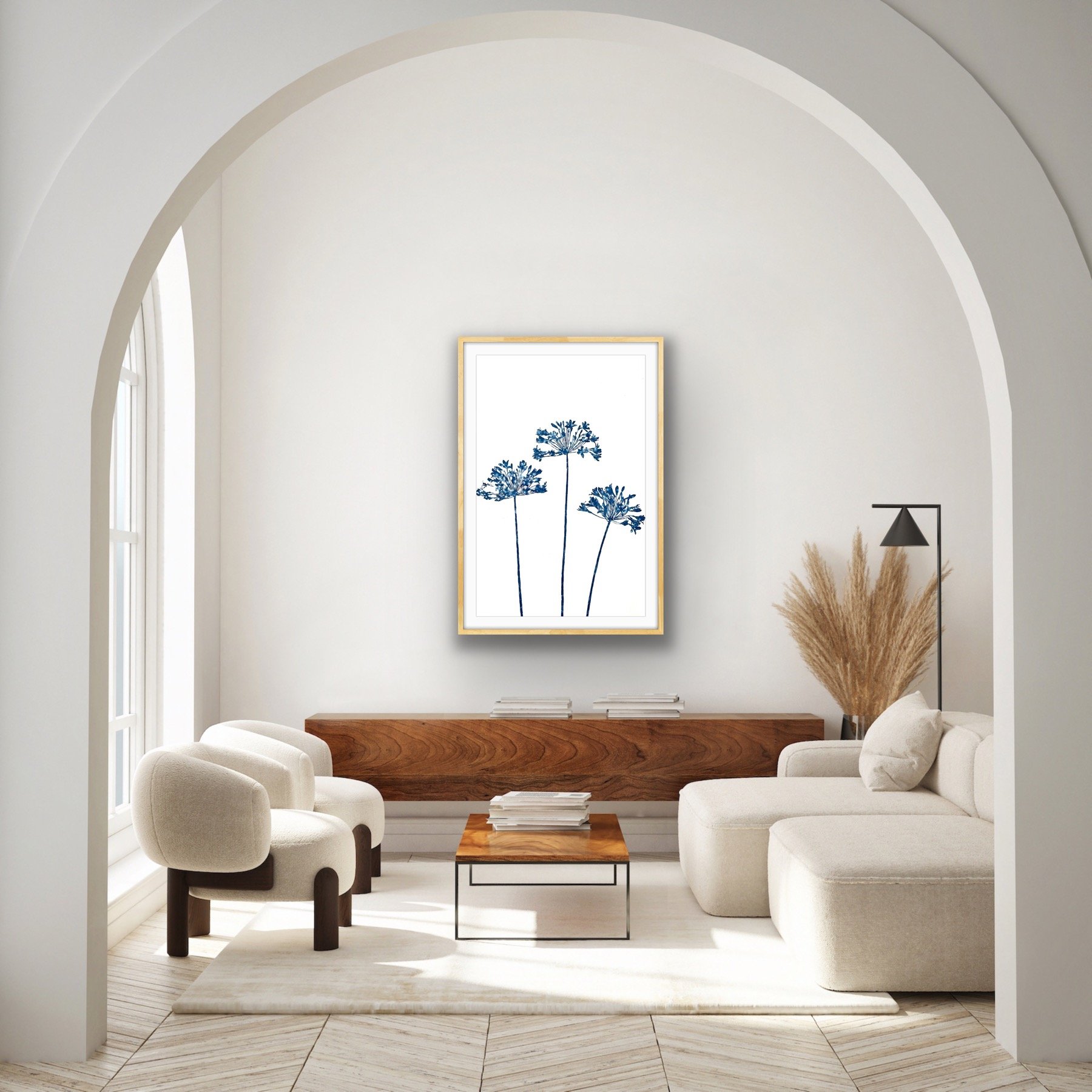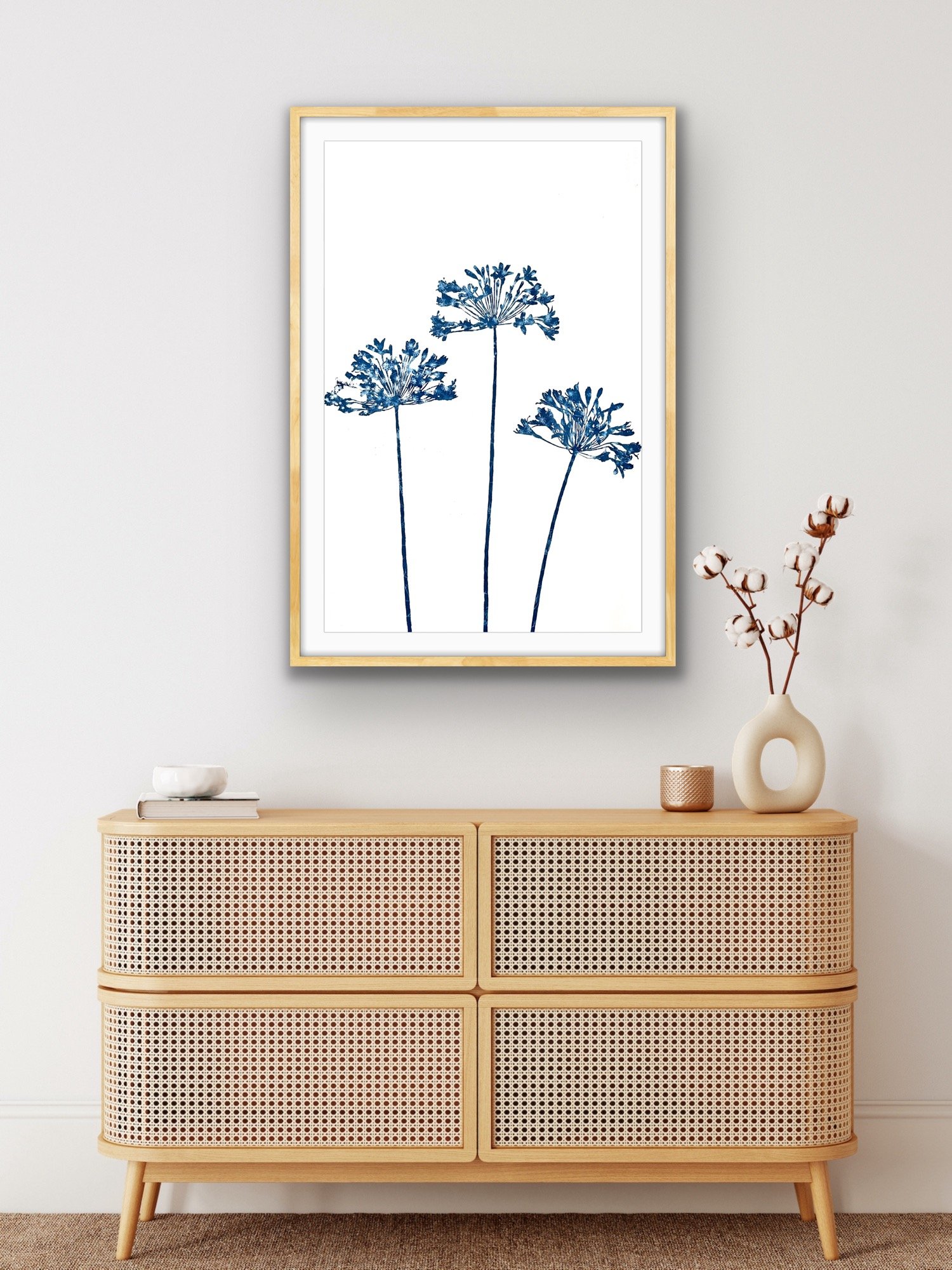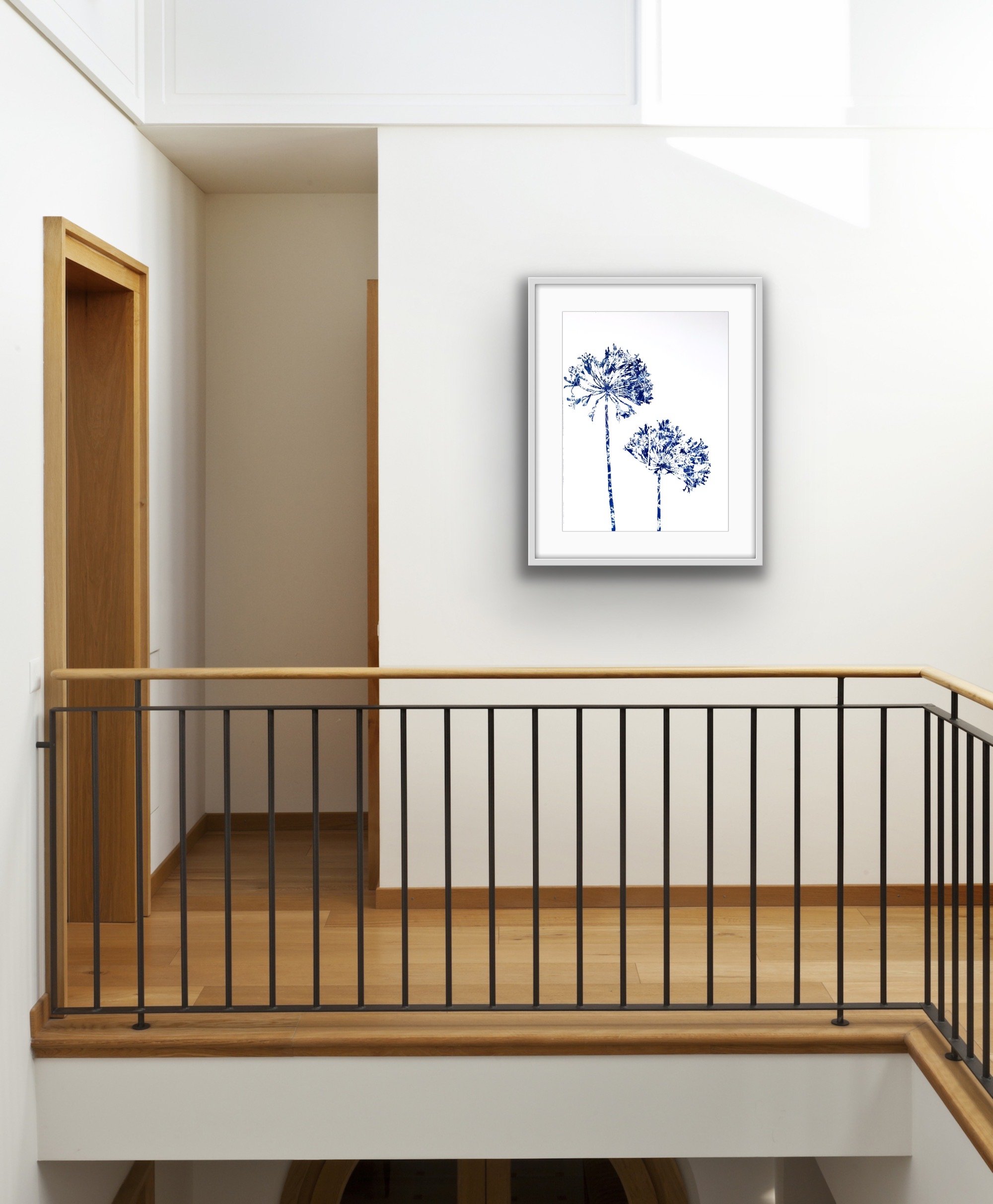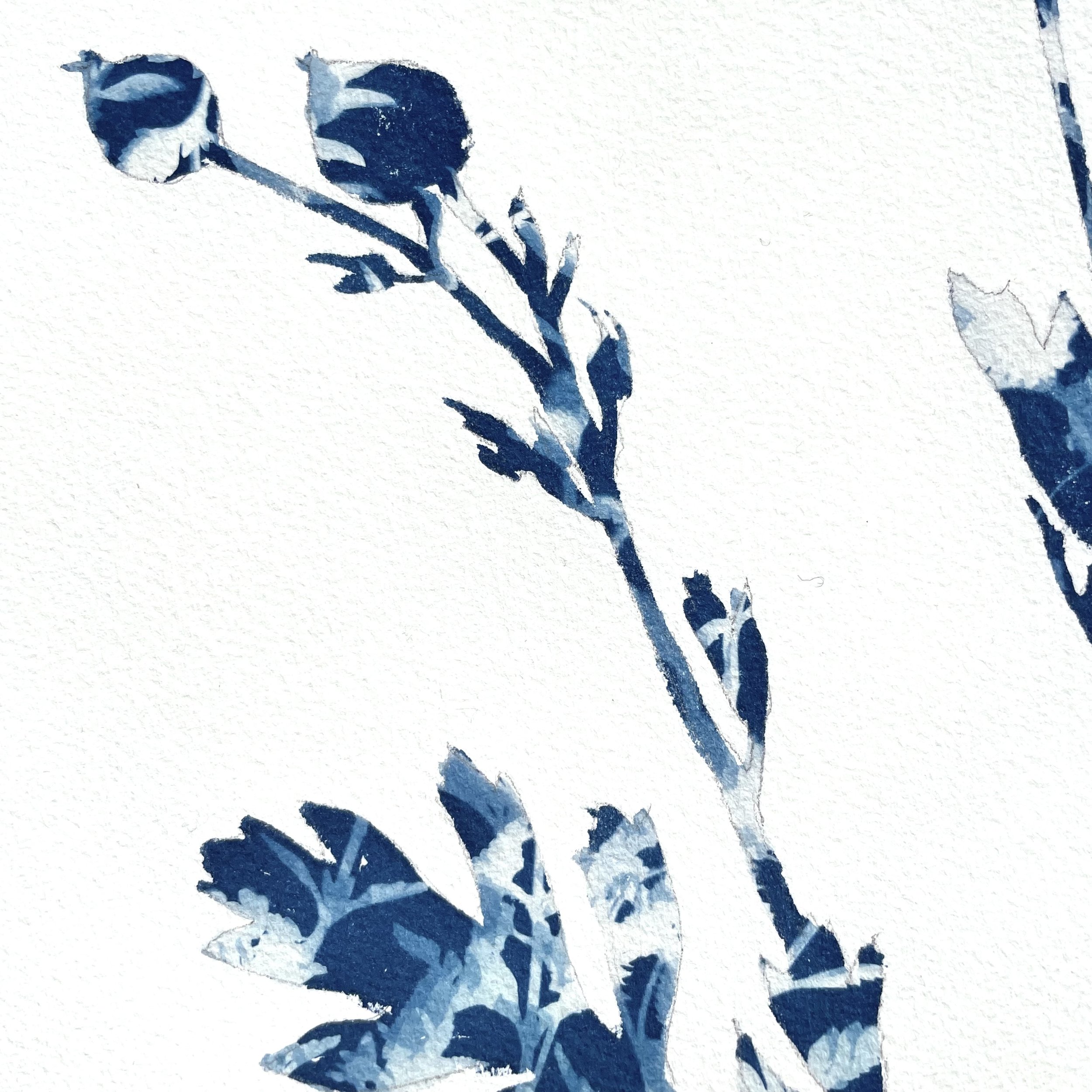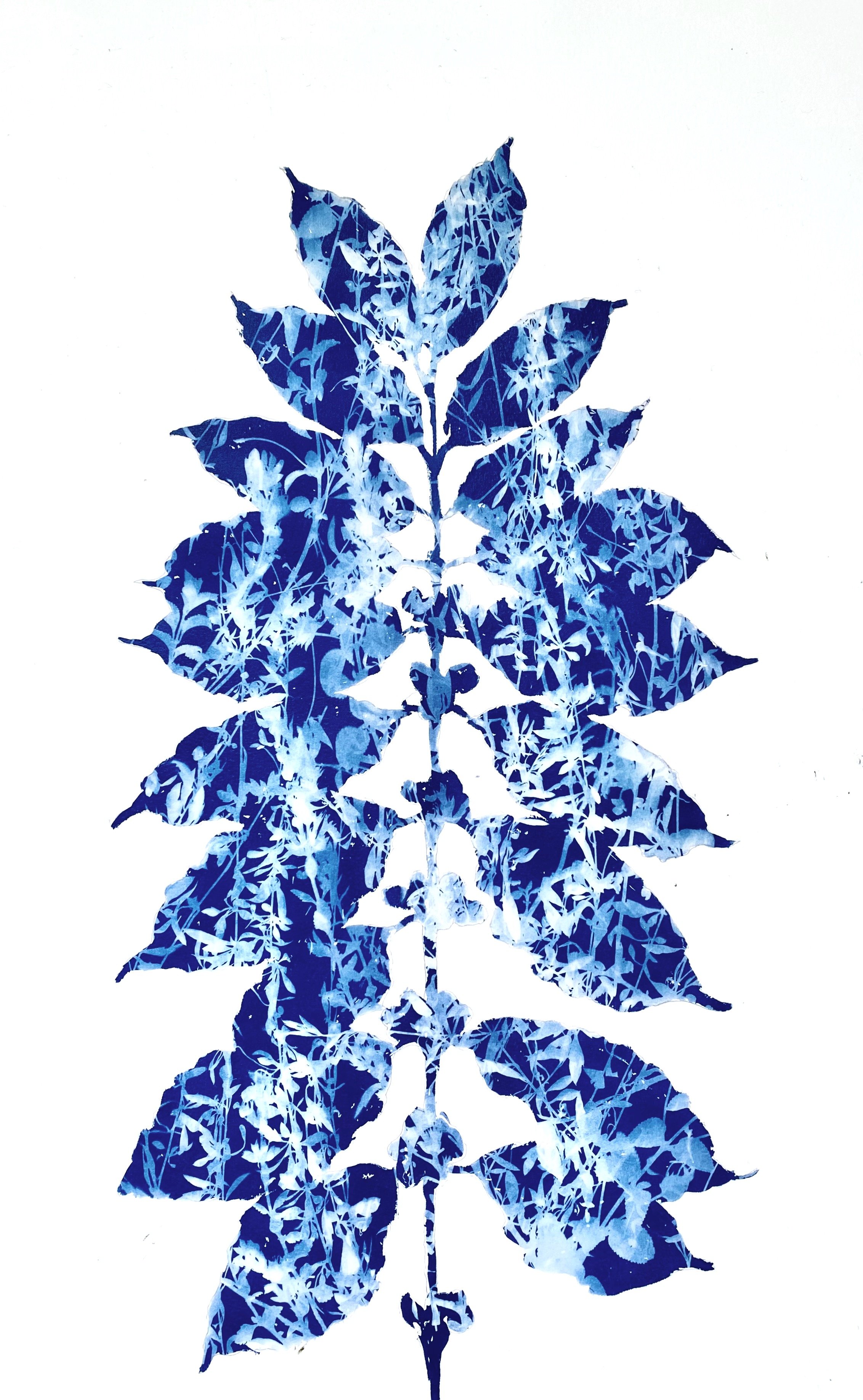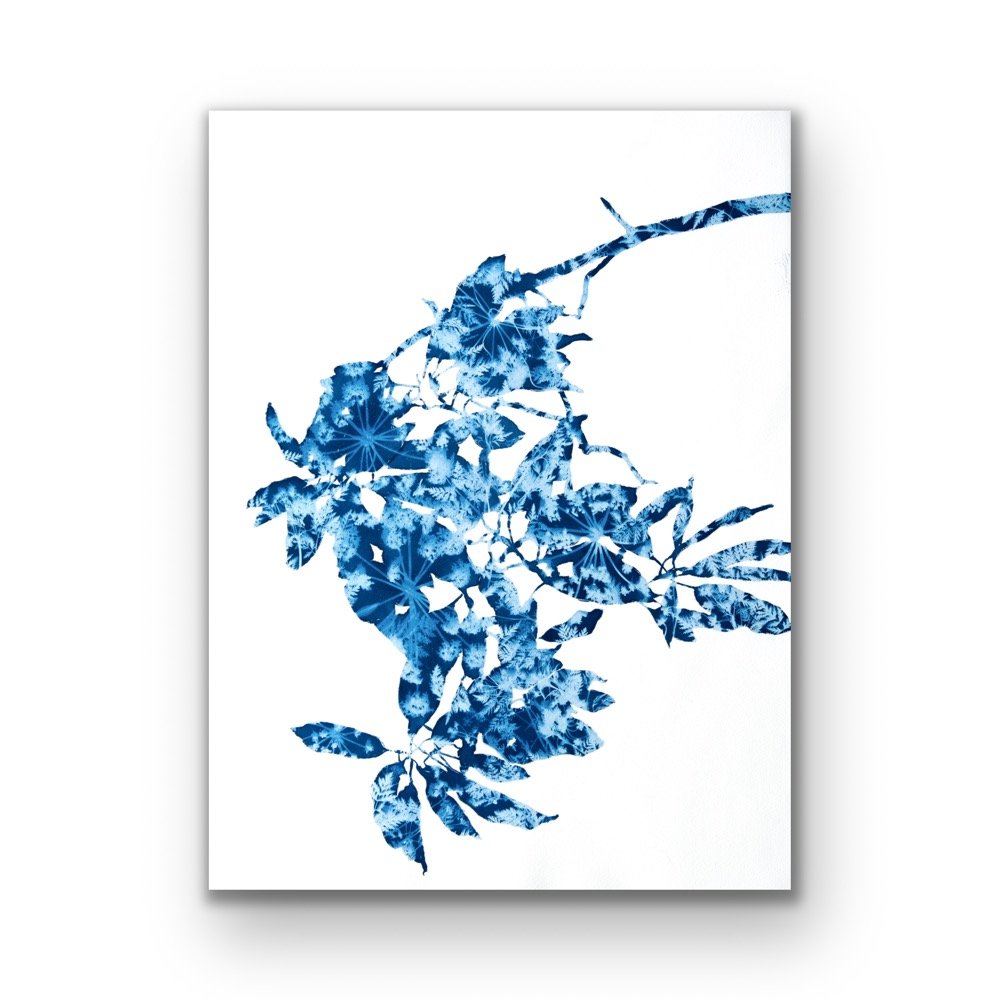 Image 1 of 11
Image 1 of 11

 Image 2 of 11
Image 2 of 11

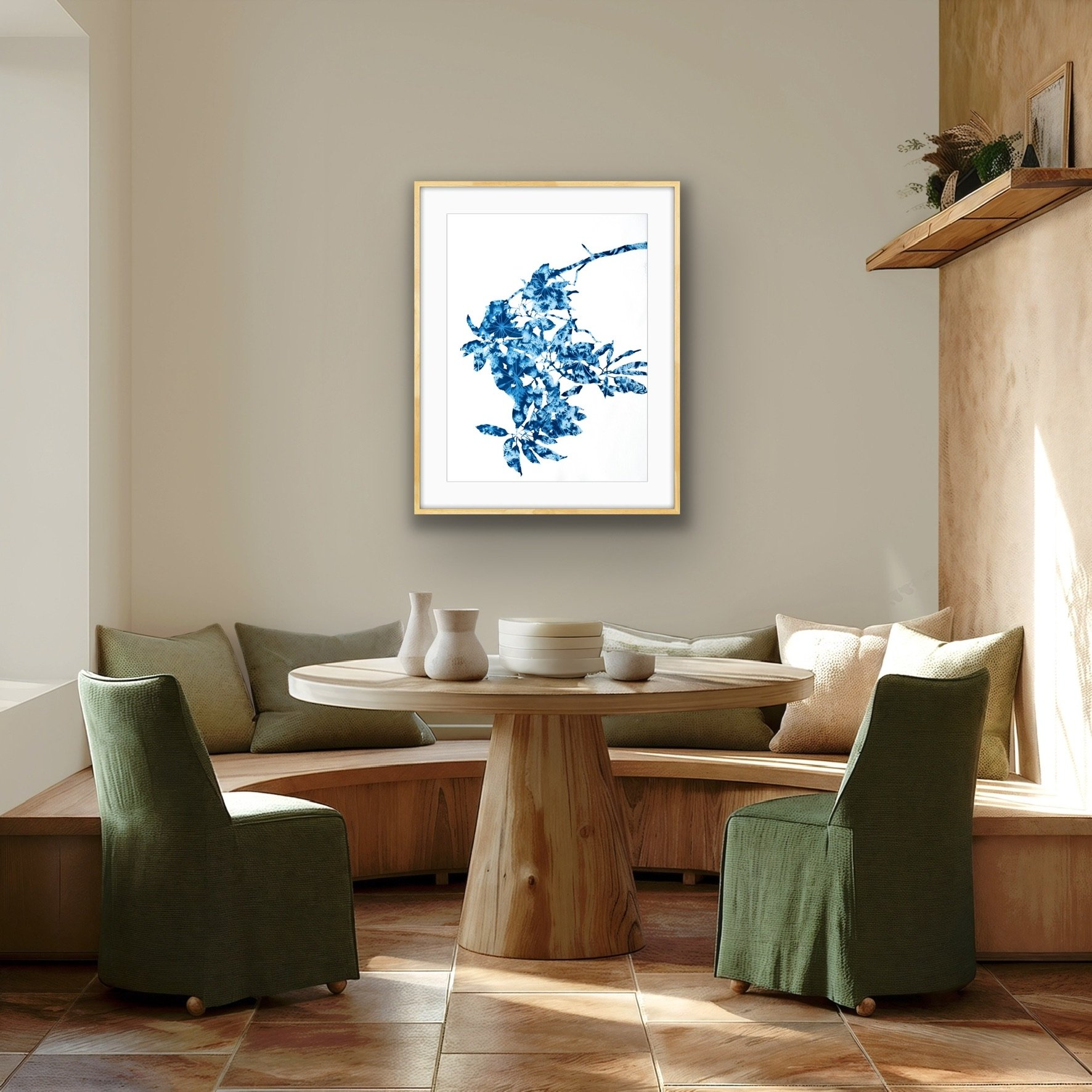 Image 3 of 11
Image 3 of 11

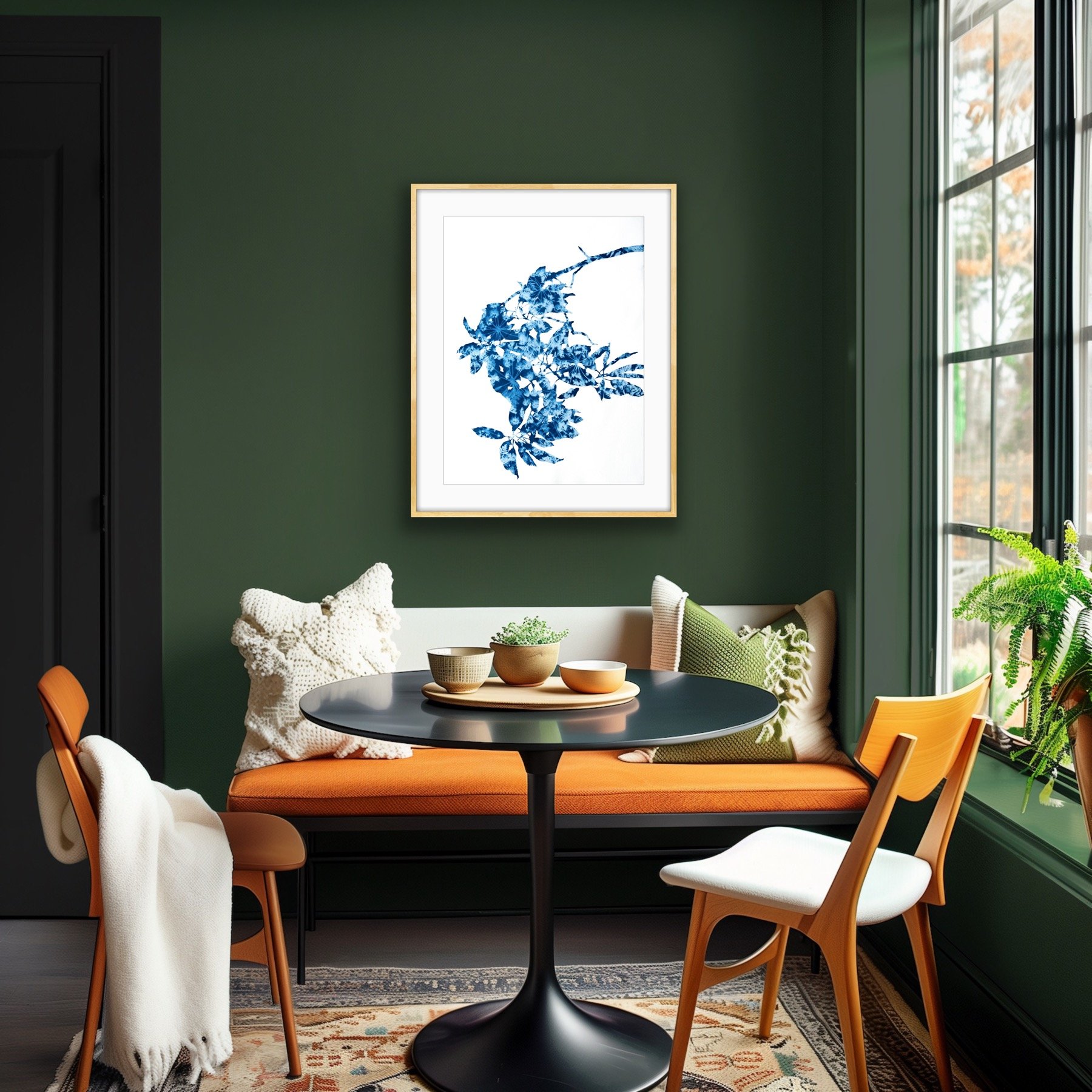 Image 4 of 11
Image 4 of 11

 Image 5 of 11
Image 5 of 11

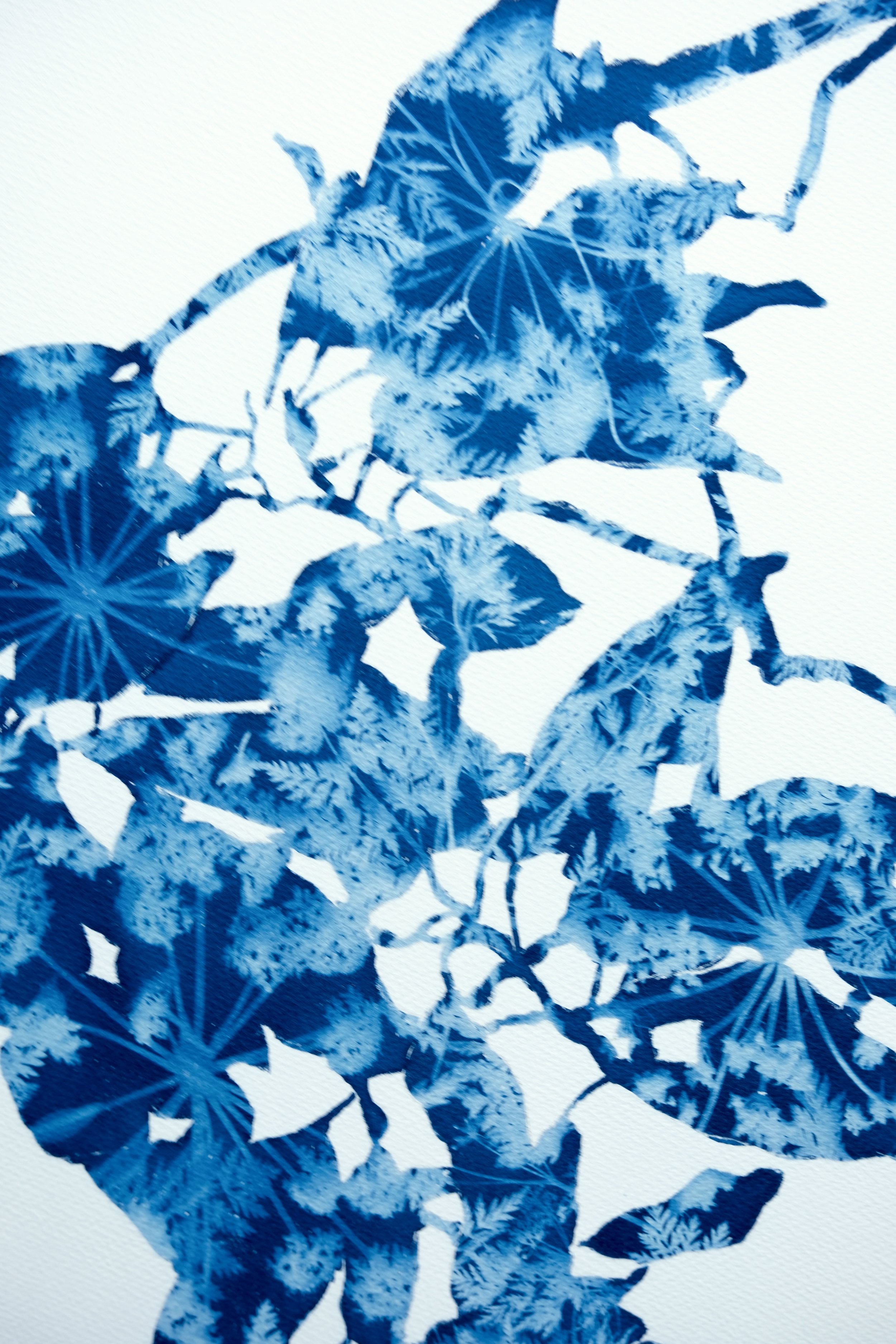 Image 6 of 11
Image 6 of 11

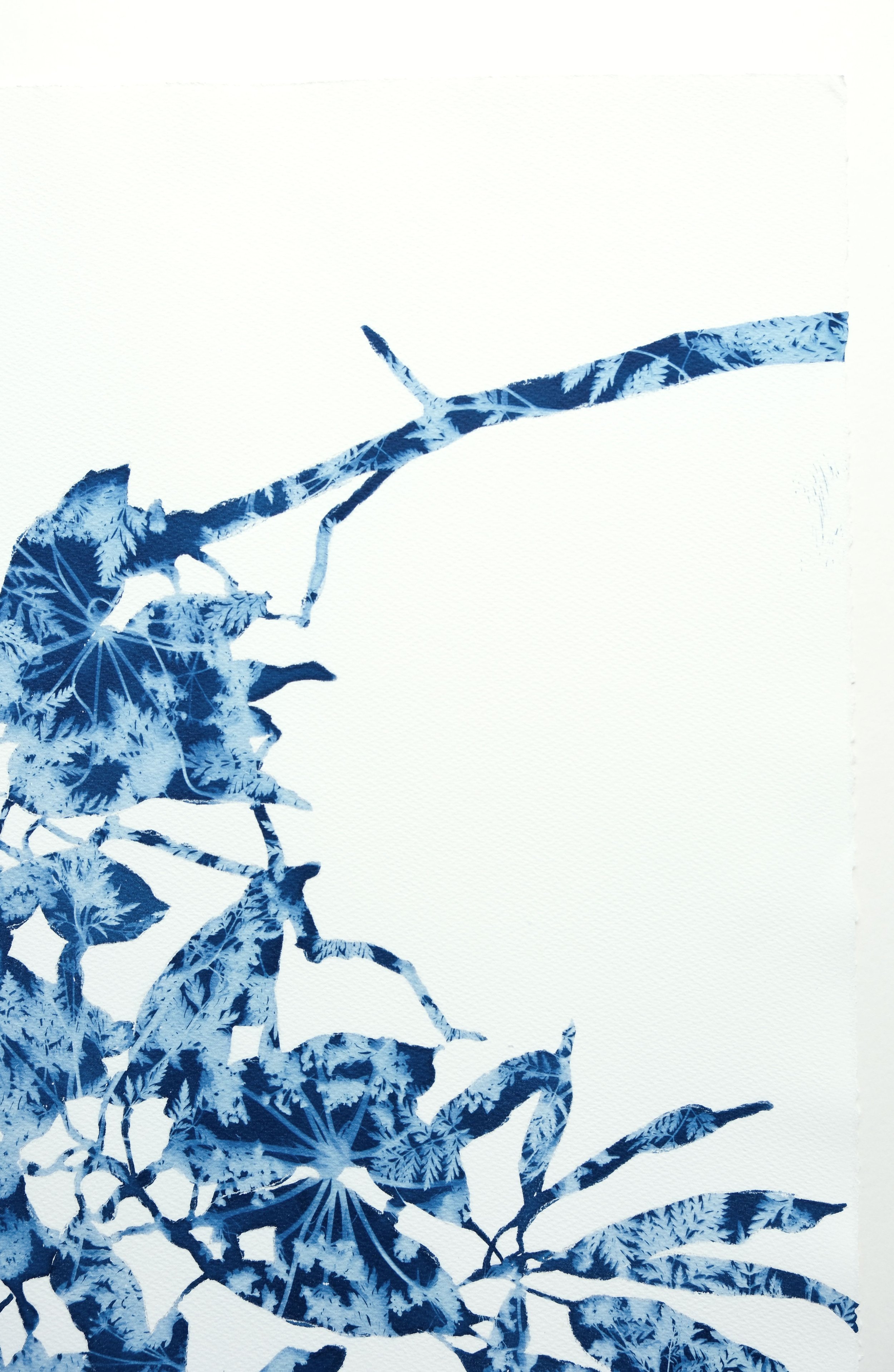 Image 7 of 11
Image 7 of 11

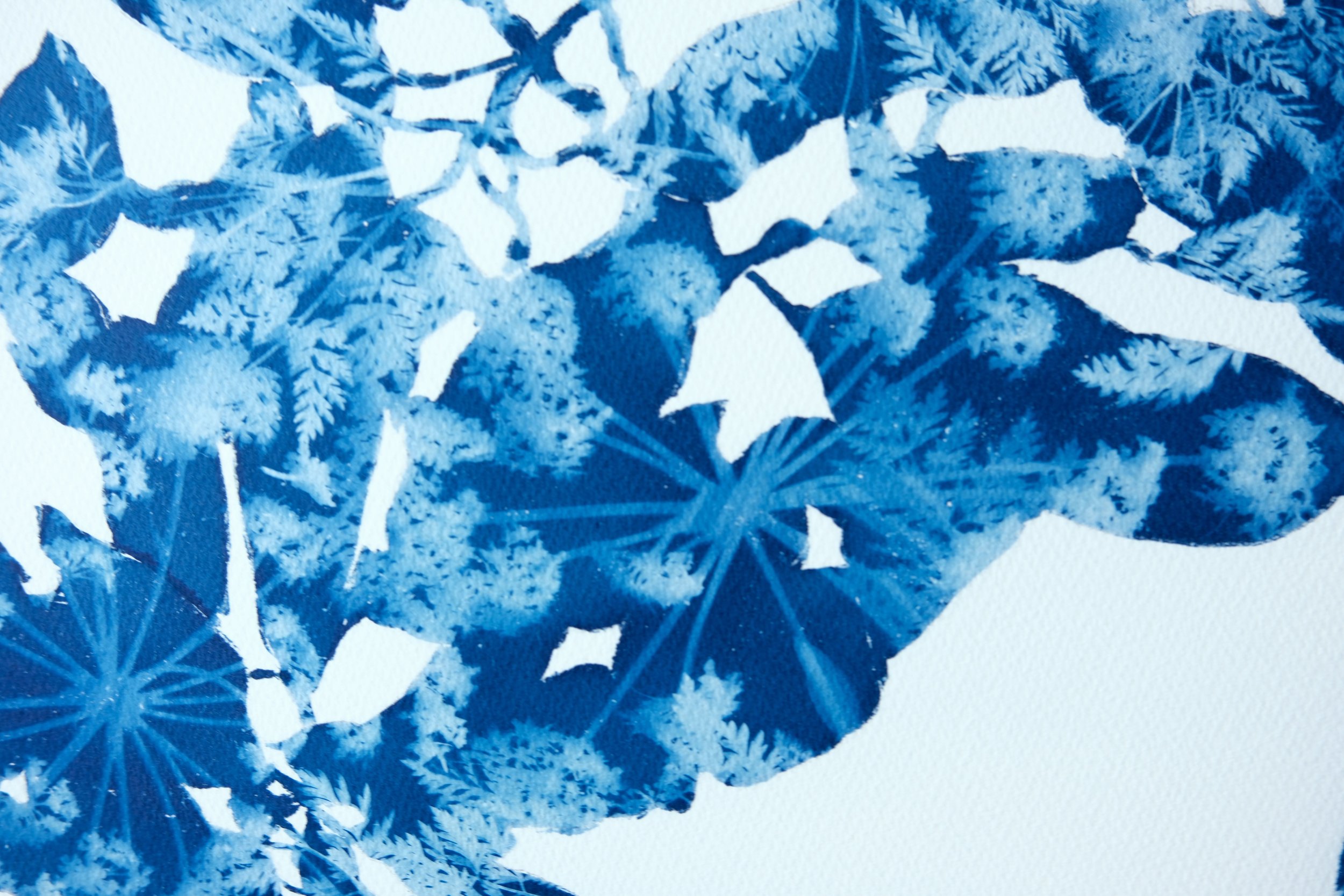 Image 8 of 11
Image 8 of 11

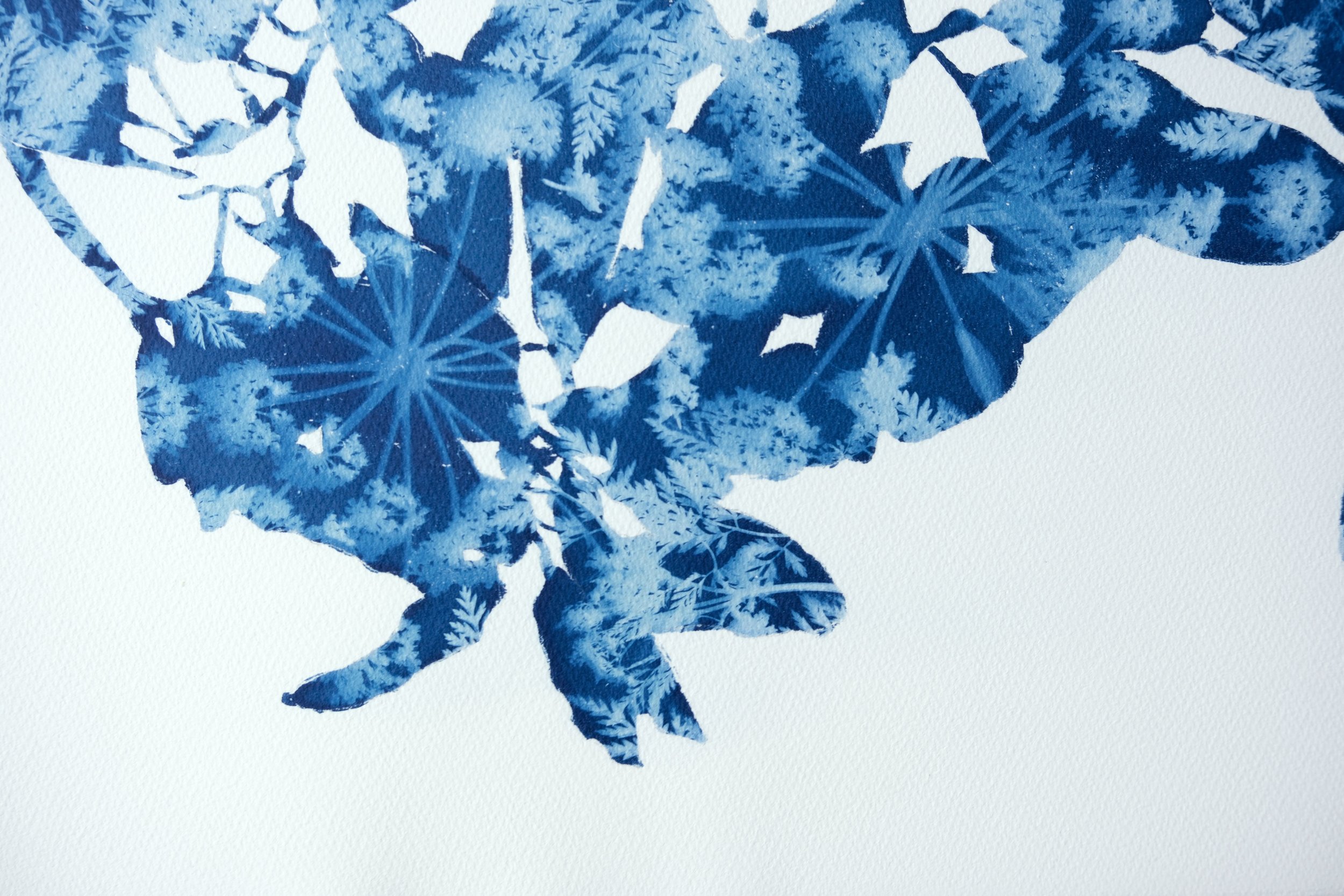 Image 9 of 11
Image 9 of 11

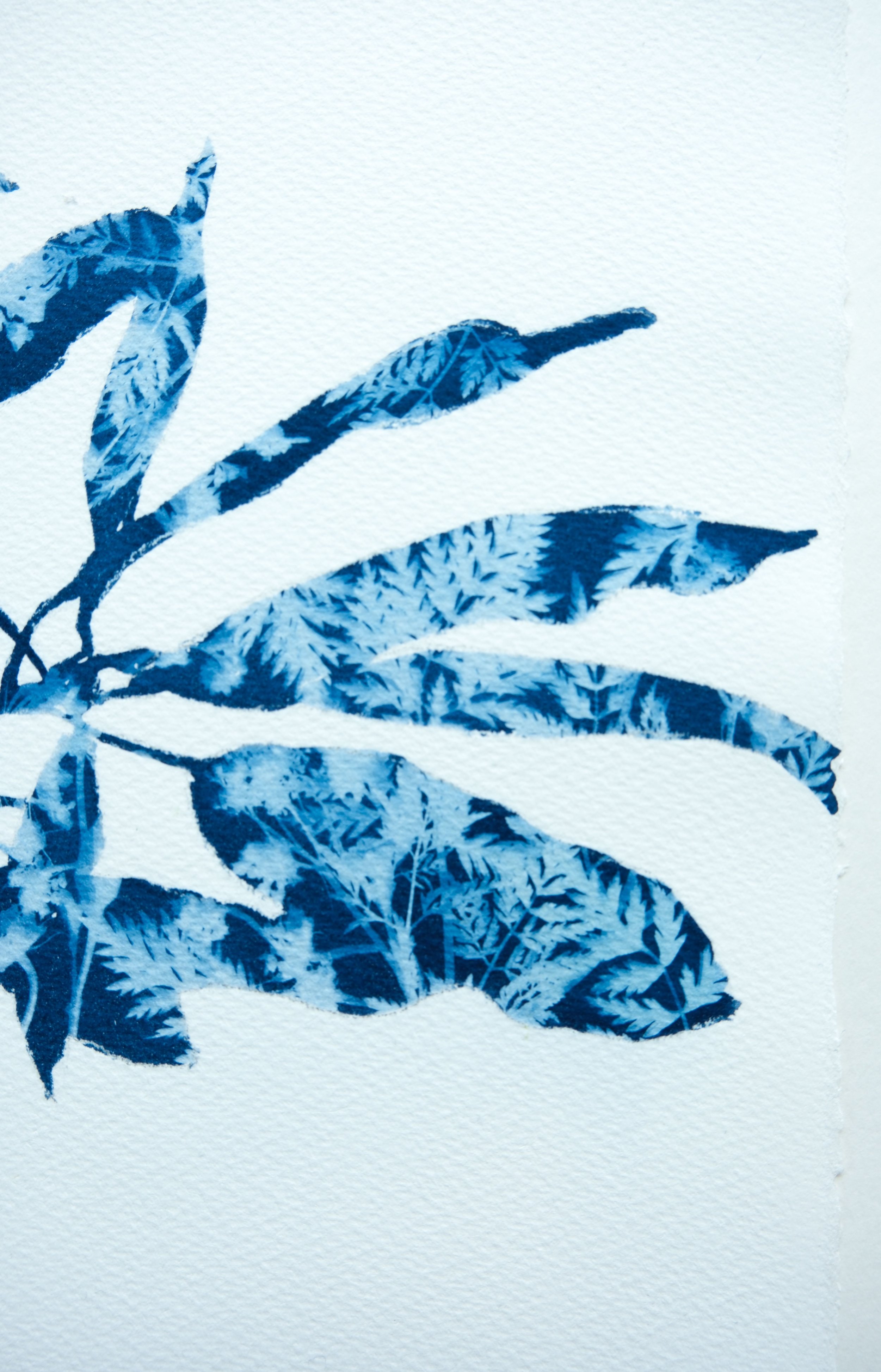 Image 10 of 11
Image 10 of 11

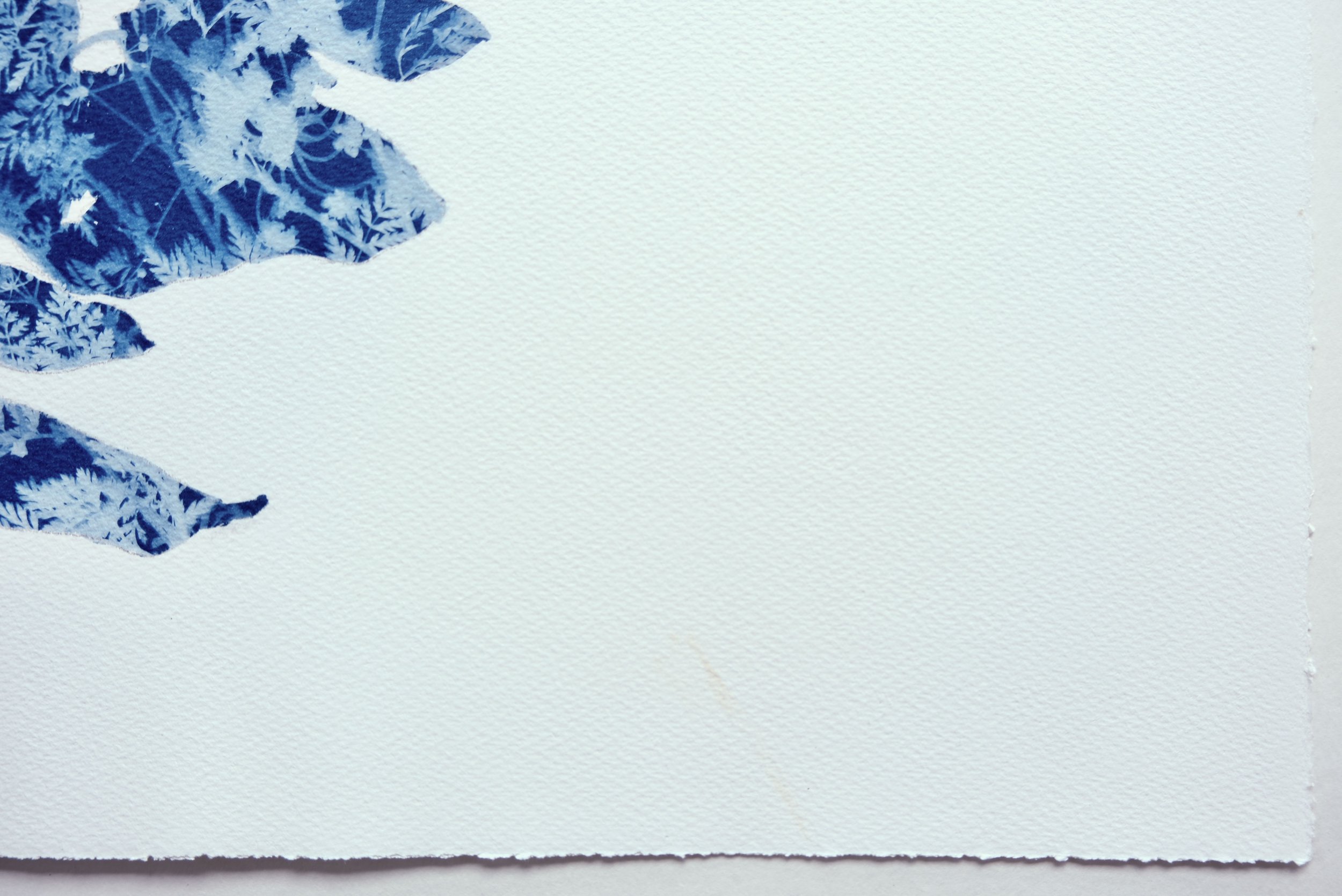 Image 11 of 11
Image 11 of 11












Spring Madrone V (Unframed 30 x 22" original cyanotype painting)
REASON FOR DISCOUNT:
There are some tiny stains—thin blue lines along the upper right edge (see third closeup photo) and a faint pink stain along the bottom edge on the right side (last closeup photo).
This is a combination of painting and a kind of alternative photographic process from the 1800s: cyanotype. I drew the plant and painted it in —not with ink or paint, but with light-sensitive photo emulsion.
The blue and white pattern seen in each leaf which resembles painted Delft pottery is really a sun print or cameraless photograph of tiny plants laid on top. If you look closely you may see a tiny flower or two.
NOTE: A bigger size than the 24 × 18” Spring Madrone I, but the same 30 × 22” size as Spring Madrone II, Spring Madrone III and Spring Madrone V.
Unframed. Signed on the back.
On 100% cotton watercolor paper.
Decorative deckled edges can be float-mounted (not covered under a mat).
REASON FOR DISCOUNT:
There are some tiny stains—thin blue lines along the upper right edge (see third closeup photo) and a faint pink stain along the bottom edge on the right side (last closeup photo).
This is a combination of painting and a kind of alternative photographic process from the 1800s: cyanotype. I drew the plant and painted it in —not with ink or paint, but with light-sensitive photo emulsion.
The blue and white pattern seen in each leaf which resembles painted Delft pottery is really a sun print or cameraless photograph of tiny plants laid on top. If you look closely you may see a tiny flower or two.
NOTE: A bigger size than the 24 × 18” Spring Madrone I, but the same 30 × 22” size as Spring Madrone II, Spring Madrone III and Spring Madrone V.
Unframed. Signed on the back.
On 100% cotton watercolor paper.
Decorative deckled edges can be float-mounted (not covered under a mat).
